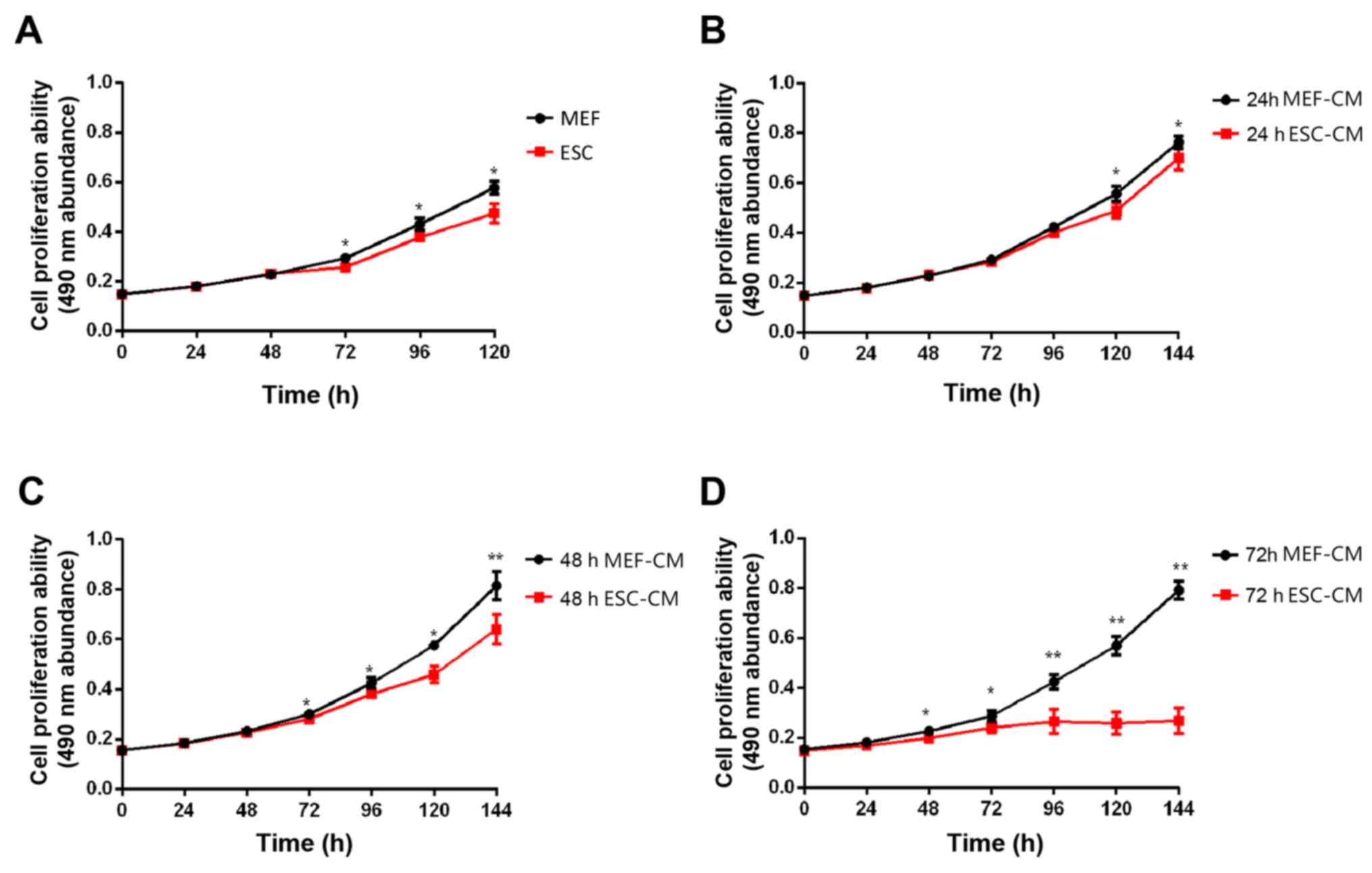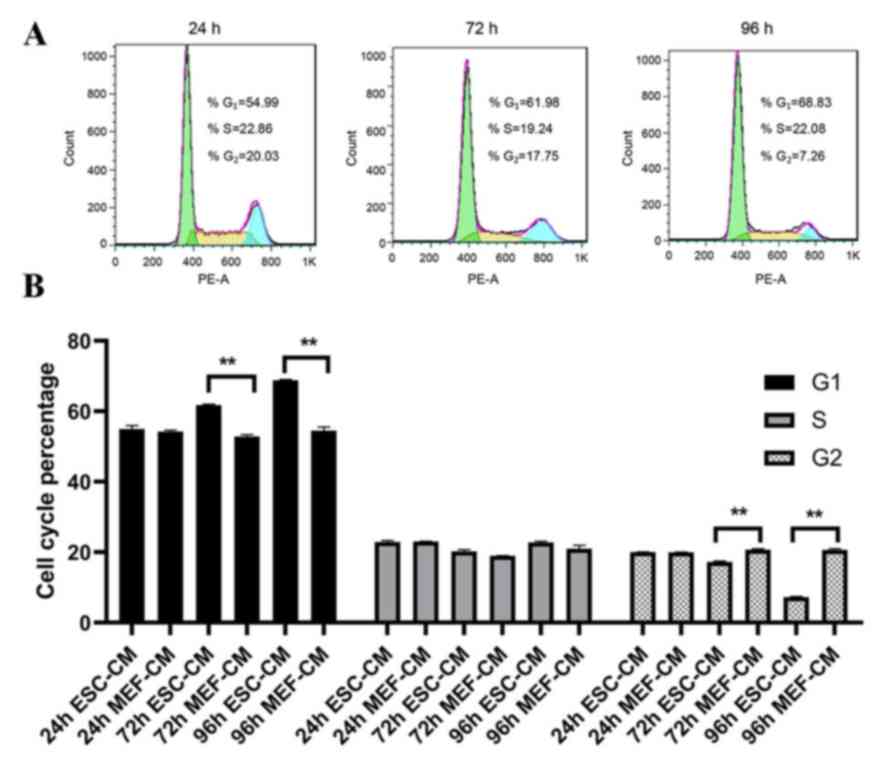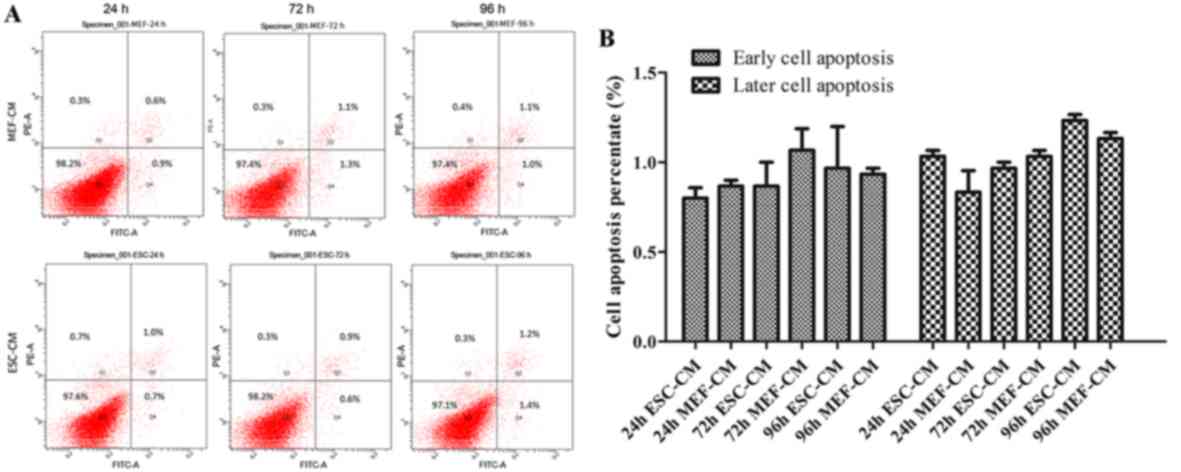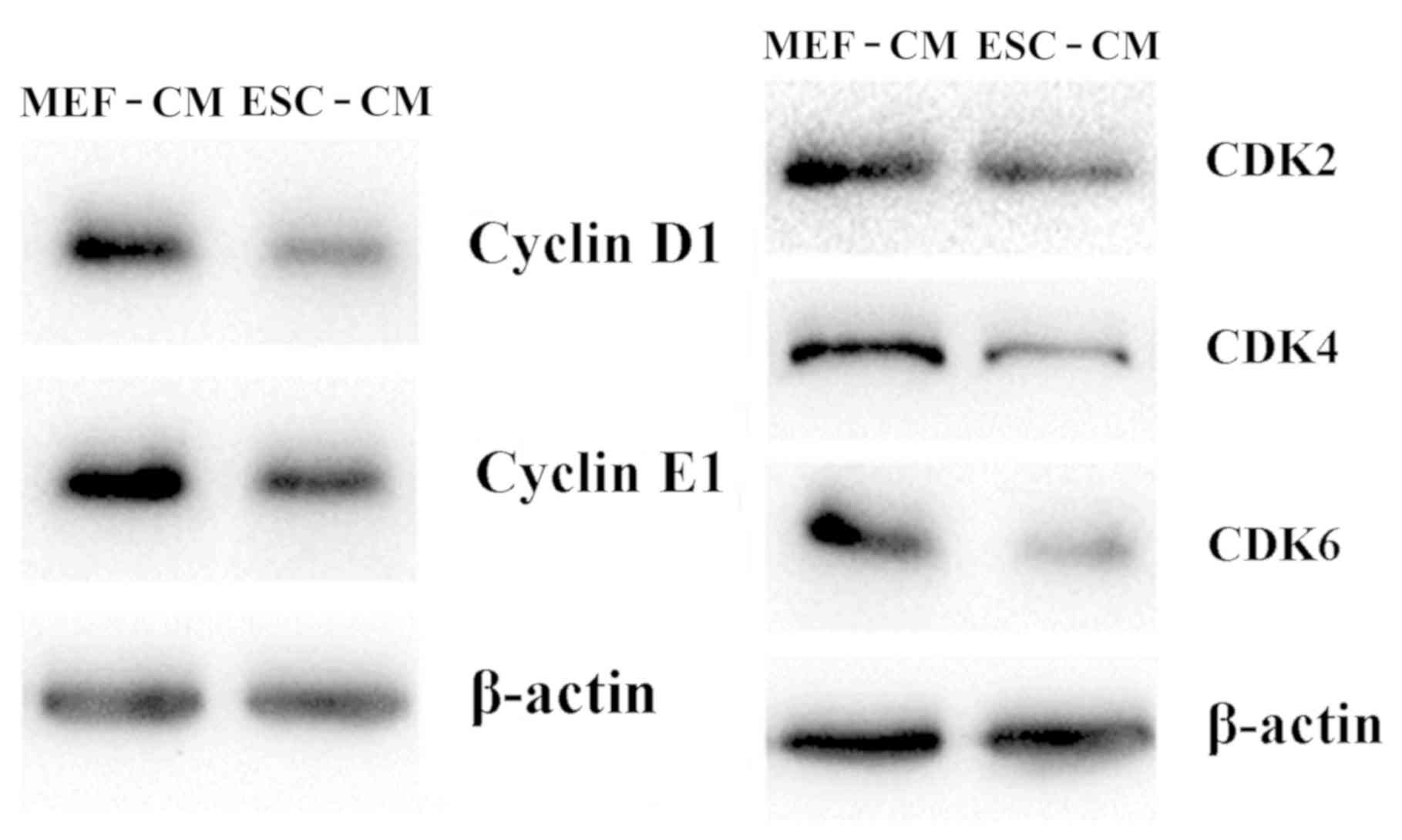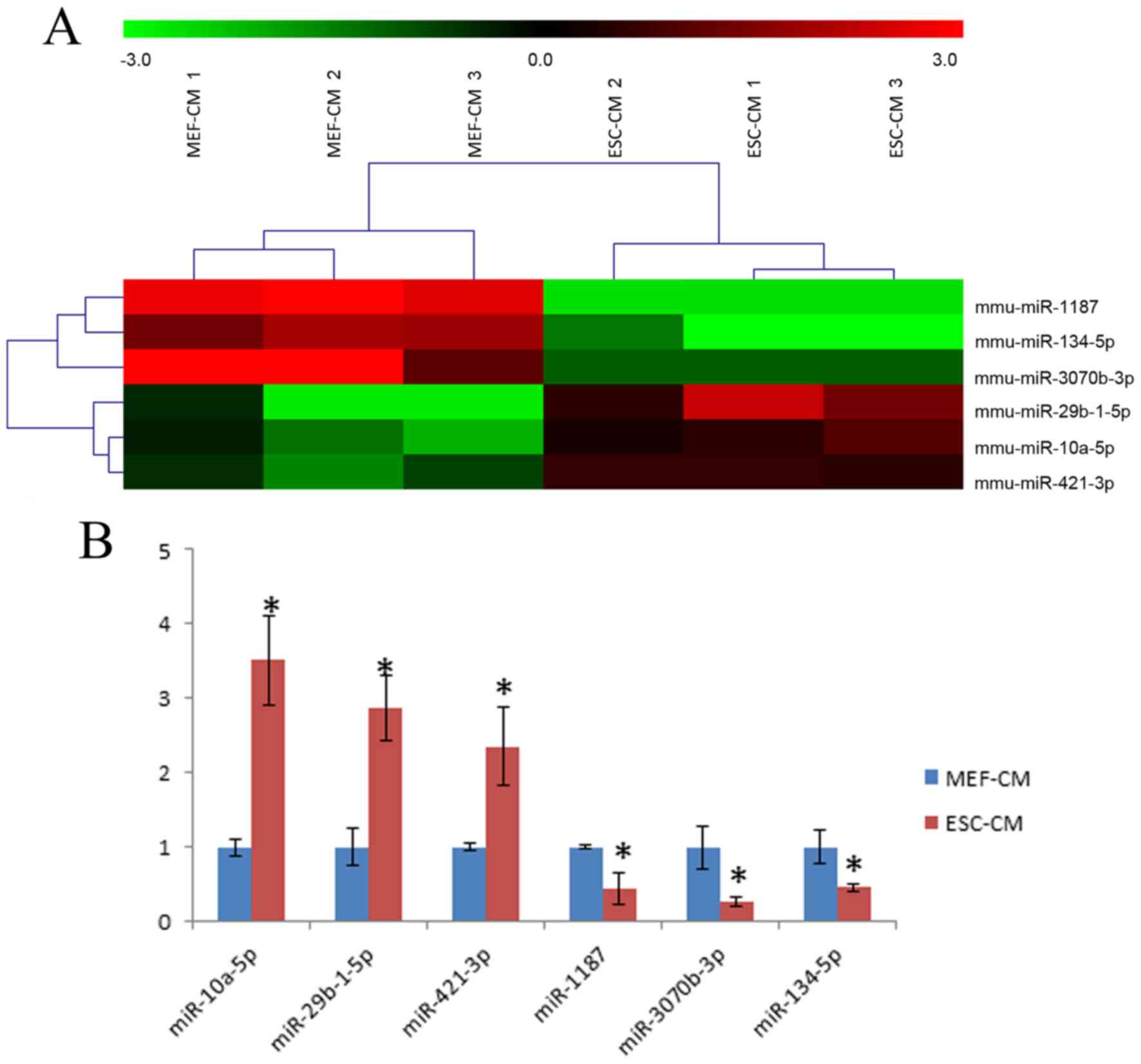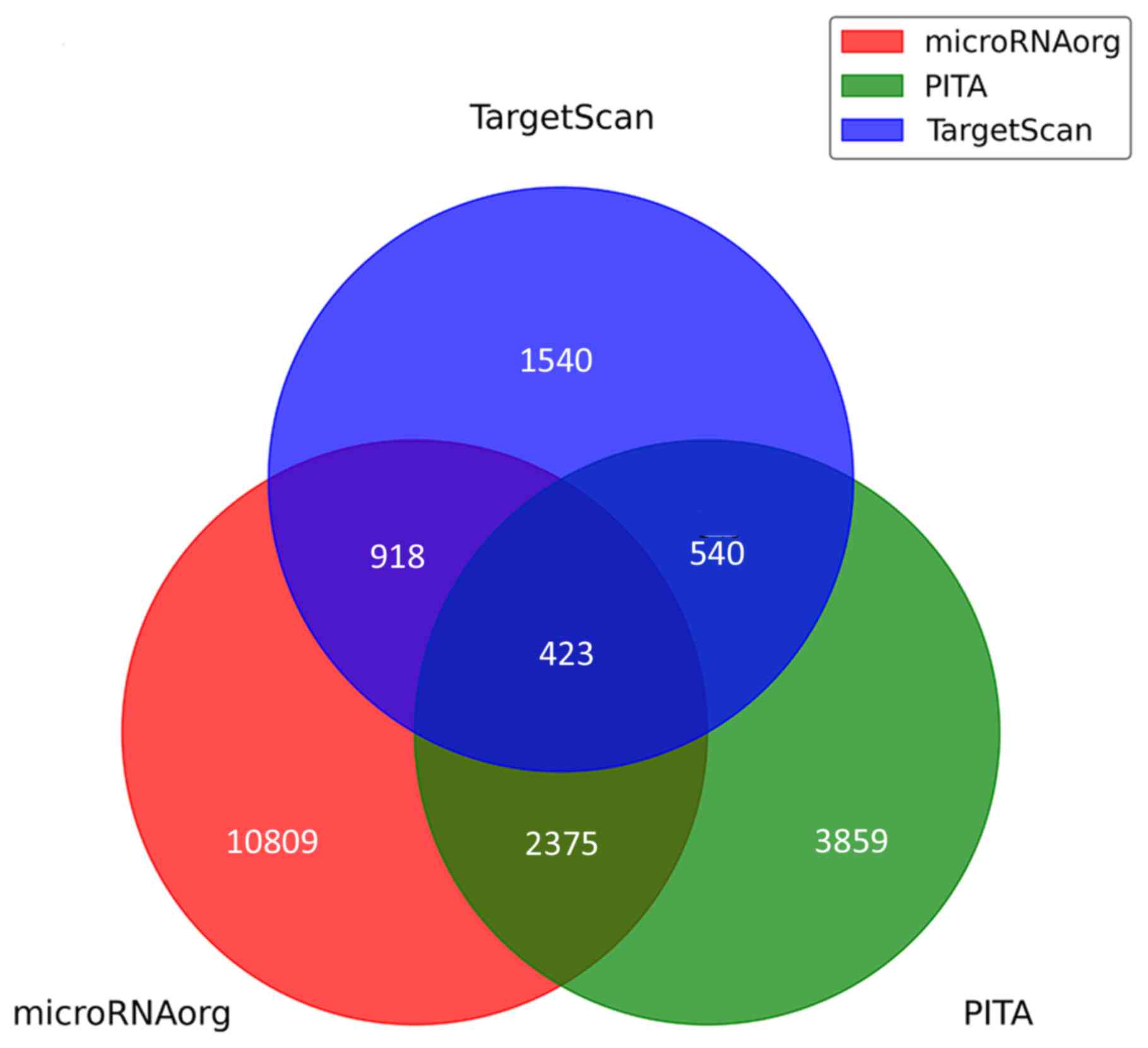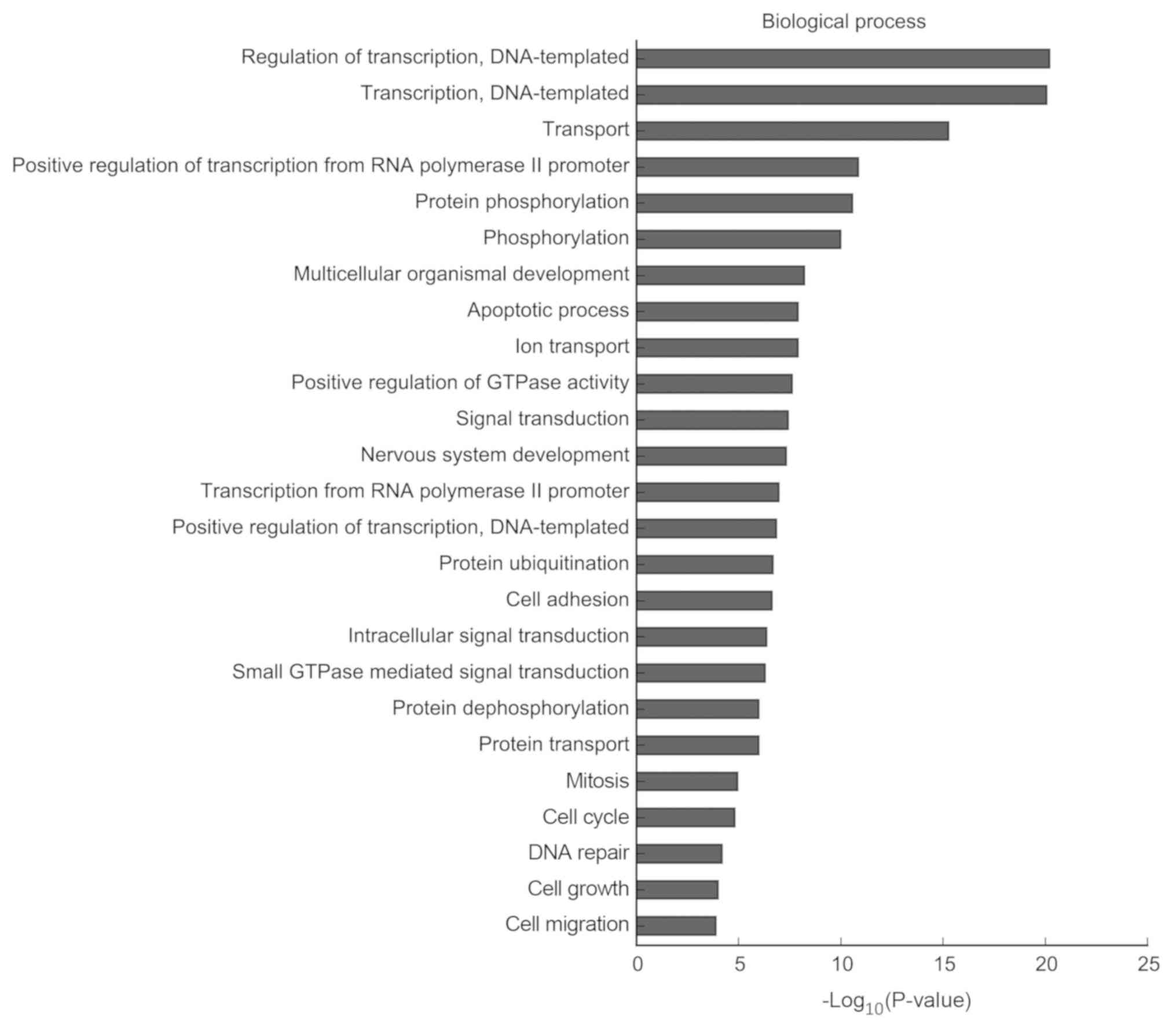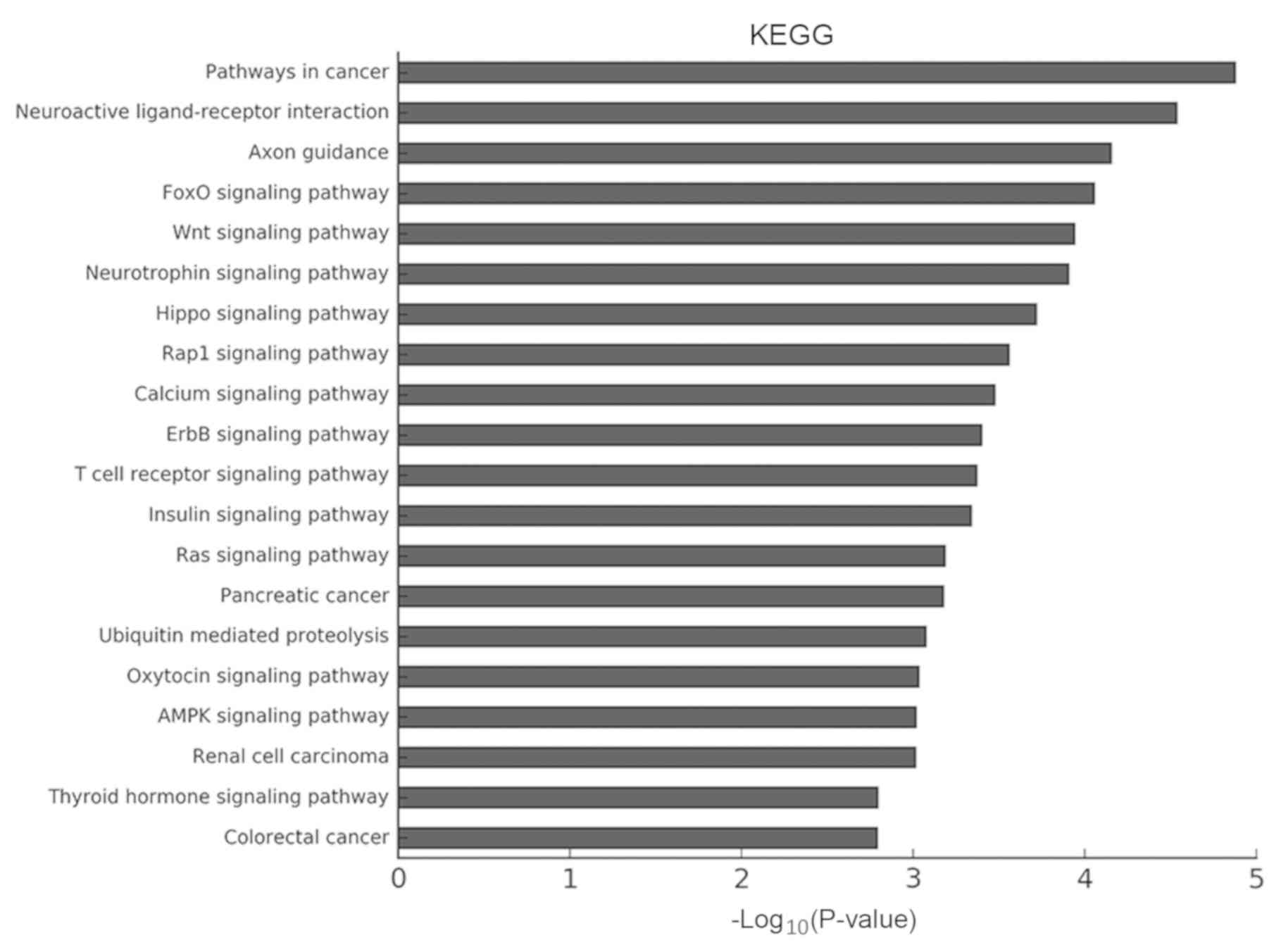|
1
|
Bray F, Ferlay J, Soerjomataram I, Siegel
RL, Torre LA and Jemal A: Global cancer statistics 2018: GLOBOCAN
estimates of incidence and mortality worldwide for 36 cancers in
185 countries. CA Cancer J Clin. 68:394–424. 2018.PubMed/NCBI View Article : Google Scholar
|
|
2
|
Ryan MJ, Willatt J, Majdalany BS, Kielar
AZ, Chong S, Ruma JA and Pandya A: Ablation techniques for primary
and metastatic liver tumors. World J Hepatol. 8:191–199.
2016.PubMed/NCBI View Article : Google Scholar
|
|
3
|
Boroviak T, Loos R, Bertone P, Smith A and
Nichols J: The ability of inner-cell-mass cells to self-renew as
embryonic stem cells is acquired following epiblast specification.
Nat Cell Biol. 16:516–528. 2014.PubMed/NCBI View
Article : Google Scholar
|
|
4
|
Williams JW III, Carlson DL, Gadson RG,
Rollins-Smith L, Williams CS and Mckinnell RG: Cytogenetic analysis
of triploid renal carcinoma in Rana pipiens. Cytogenet Cell Genet.
64:18–22. 1993.PubMed/NCBI View Article : Google Scholar
|
|
5
|
Illmensee K: Reversion of malignancy and
normalized differentiation of teratocarcinoma cells in chimeric
mice. Basic Life Sci. 12:3–25. 1978.PubMed/NCBI View Article : Google Scholar
|
|
6
|
Melzer C, von der Ohe J, Lehnert H,
Ungefroren H and Hass R: Cancer stem cell niche models and
contribution by mesenchymal stroma/stem cells. Mol Cancer.
16(28)2017.PubMed/NCBI View Article : Google Scholar
|
|
7
|
Giuffrida D, Rogers IM, Nagy A, Calogero
AE, Brown TJ and Casper RF: Human embryonic stem cells secrete
soluble factors that inhibit cancer cell growth. Cell Prolif.
42:788–798. 2009.PubMed/NCBI View Article : Google Scholar
|
|
8
|
Cavallari C, Fonsato V, Herrera MB, Bruno
S, Tetta C and Camussi G: Role of lefty in the anti tumor activity
of human adult liver stem cells. Oncogene. 32:819–826.
2013.PubMed/NCBI View Article : Google Scholar
|
|
9
|
He N, Feng G, Li Y, Xu Y, Xie X, Wang H,
Wang Y, Ou L, Pei X and Liu N: Embryonic stem cell preconditioned
microenvironment suppresses tumorigenic properties in breast
cancer. Stem Cell Res Ther. 7(95)2016.PubMed/NCBI View Article : Google Scholar
|
|
10
|
Becker A, Thakur BK, Weiss JM, Kim HS,
Peinado H and Lyden D: Extracellular vesicles in cancer:
Cell-to-cell mediators of metastasis. Cancer Cell. 30:836–848.
2016.PubMed/NCBI View Article : Google Scholar
|
|
11
|
Gopal SK, Greening DW, Rai A, Chen M, Xu
R, Shafiq A, Mathias RA, Zhu HJ and Simpson RJ: Extracellular
vesicles: Their role in cancer biology and epithelial-mesenchymal
transition. Biochem J. 474:21–45. 2017.PubMed/NCBI View Article : Google Scholar
|
|
12
|
Khan M, Nickoloff E, Abramova T, Johnson
J, Verma SK, Krishnamurthy P, Mackie AR, Vaughan E, Garikipati VN,
Benedict C, et al: Embryonic stem cell-derived exosomes promote
endogenous repair mechanisms and enhance cardiac function following
myocardial infarction. Circ Res. 117:52–64. 2015.PubMed/NCBI View Article : Google Scholar
|
|
13
|
Yaddanapudi K, Mitchell RA, Putty K,
Willer S, Sharma RK, Yan J, Bodduluri H and Eaton JW: Vaccination
with embryonic stem cells protects against lung cancer: Is a
broad-spectrum prophylactic vaccine against cancer possible? PLoS
One. 7(e42289)2012.PubMed/NCBI View Article : Google Scholar
|
|
14
|
Livak KJ and Schmittgen TD: Analysis of
relative gene expression data using real-time quantitative PCR and
the 2(-Delta Delta C(T)) method. Methods. 25:402–408.
2001.PubMed/NCBI View Article : Google Scholar
|
|
15
|
Zhang ZJ, Chen XH, Chang XH, Ye X, Li Y
and Cui H: Human embryonic stem cells-a potential vaccine for
ovarian cancer. Asian Pac J Cancer Prev. 13:4295–4300.
2012.PubMed/NCBI View Article : Google Scholar
|
|
16
|
Zhang Z, Chen X, Chang X, Ye X, Li Y and
Cui H: Vaccination with embryonic stem cells generates effective
antitumor immunity against ovarian cancer. Int J Mol Med.
31:147–153. 2013.PubMed/NCBI View Article : Google Scholar
|
|
17
|
Adam V, Wauters I and Vansteenkiste J:
Melanoma-associated antigen-A3 vaccination in the treatment of
non-small-cell lung cancer. Exp Opin Biol Ther. 14:365–376.
2014.PubMed/NCBI View Article : Google Scholar
|
|
18
|
Qiu ZA and He GP: MicroRNA-134 functions
as a tumor suppressor gene in gastric cancer. Am J Transl Res.
8:4320–4328. 2016.PubMed/NCBI
|
|
19
|
Chen T, Gao F, Feng S, Yang T and Chen M:
MicroRNA-134 regulates lung cancer cell H69 growth and apoptosis by
targeting WWOX gene and suppressing the ERK1/2 signaling pathway.
Biochem Biophys Res Commun. 464:748–754. 2015.PubMed/NCBI View Article : Google Scholar
|
|
20
|
Muluhngwi P, Krishna A, Vittitow SL,
Napier JT, Richardson KM, Ellis M, Mott JL and Klinge CM: Tamoxifen
differentially regulates miR-29b-1 and miR-29a expression depending
on endocrine-sensitivity in breast cancer cells. Cancer Lett.
388:230–238. 2017.PubMed/NCBI View Article : Google Scholar
|
|
21
|
Yu DS, An FM, Gong BD, Xiang XG, Lin LY,
Wang H and Xie Q: The regulatory role of microRNA-1187 in
TNF-α-mediated hepatocyte apoptosis in acute liver failure. Int J
Mol Med. 29:663–668. 2012.PubMed/NCBI View Article : Google Scholar
|
|
22
|
Balakathiresan NS, Chandran R, Bhomia M,
Jia M, Li H and Maheshwari RK: Serum and amygdala microRNA
signatures of posttraumatic stress: Fear correlation and biomarker
potential. J Psychiatr Res. 57:65–73. 2014.PubMed/NCBI View Article : Google Scholar
|
|
23
|
Liu LJ, Xie SX, Chen YT, Xue JL, Zhang CJ
and Zhu F: Aberrant regulation of Wnt signaling in hepatocellular
carcinoma. World J Gastroenterol. 22:7486–7499. 2016.PubMed/NCBI View Article : Google Scholar
|
|
24
|
Yuzugullu H, Benhaj K, Ozturk N, Senturk
S, Celik E, Toylu A, Tasdemir N, Yilmaz M, Erdal E, Akcali KC, et
al: Canonical Wnt signaling is antagonized by noncanonical Wnt5a in
hepatocellular carcinoma cells. Mol Cancer. 8(90)2009.PubMed/NCBI View Article : Google Scholar
|
|
25
|
Toyama T, Lee HC, Koga H, Wands JR and Kim
M: Noncanonical Wnt11 inhibits hepatocellular carcinoma cell
proliferation and migration. Mol Cancer Res. 8:254–265.
2010.PubMed/NCBI View Article : Google Scholar
|
|
26
|
Pang EY, Bai AH, To KF, Sy SM, Wong NL,
Lai PB, Squire JA and Wong N: Identification of PFTAIRE protein
kinase 1, a novel cell division cycle-2 related gene, in the motile
phenotype of hepatocellular carcinoma cells. Hepatology.
46:436–445. 2010.PubMed/NCBI View Article : Google Scholar
|
|
27
|
Shu F, Lv S, Qin Y, Ma X, Wang X, Peng X,
Luo Y, Xu BE, Sun X and Wu J: Functional characterization of human
PFTK1 as a cyclin-dependent kinase. Proc Natl Acad Sci USA.
104:9248–9253. 2007.PubMed/NCBI View Article : Google Scholar
|
|
28
|
Jiang M, Gao Y, Yang T, Zhu X and Chen J:
Cyclin Y, a novel membrane-associated cyclin, interacts with PFTK1.
FEBS Lett. 583:2171–2178. 2009.PubMed/NCBI View Article : Google Scholar
|
|
29
|
Sun T, Co NN and Wong N: PFTK1 interacts
with cyclin Y to activate non-canonical Wnt signaling in
hepatocellular carcinoma. Biochem Biophys Res Commun. 449:163–168.
2014.PubMed/NCBI View Article : Google Scholar
|
|
30
|
Wang H, Du YC, Zhou XJ, Liu H and Tang SC:
The dual functions of YAP-1 to promote and inhibit cell growth in
human malignancy. Cancer Metastasis Rev. 33:173–181.
2014.PubMed/NCBI View Article : Google Scholar
|















